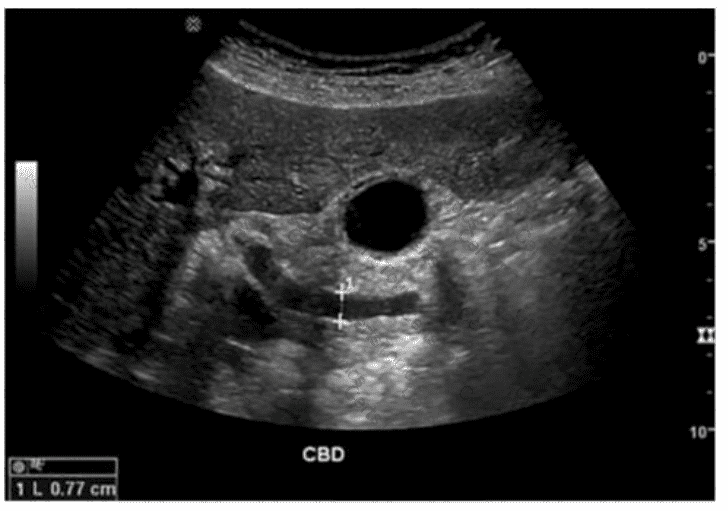Which syndrome is characterized by right upper quadrant pain, ascites, and hepatocellular dysfunction?
Which technique best differentiates a bladder mass from a hematoma?
Which portion of the biliary system is last to become dilated with biliary obstruction at the ampulla of Vater?
Which portion of the renal arterial vasculature is indicated by the arrow in this image?
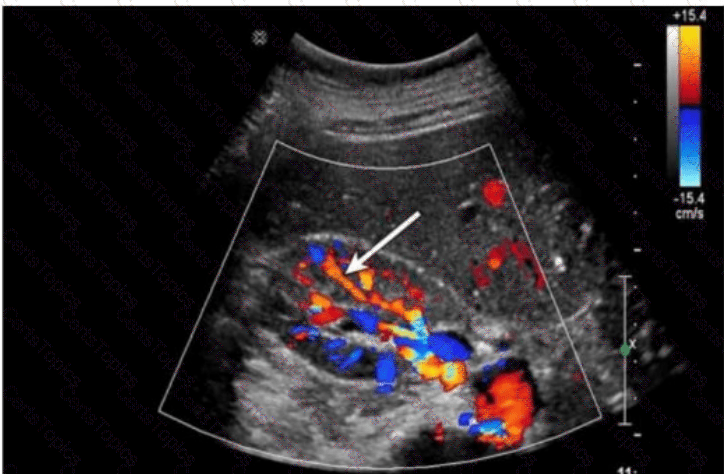
A patient with hepatocellular carcinoma presents for a paracentesis. Which lab value is the most pertinent to the procedure?
Which term best describes the common bile duct measured in this image of a postcholecystectomy patient?
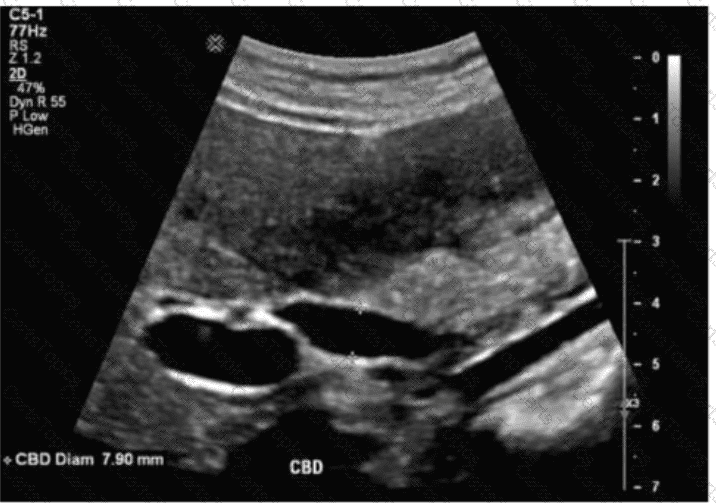
Which condition is demonstrated in this image?
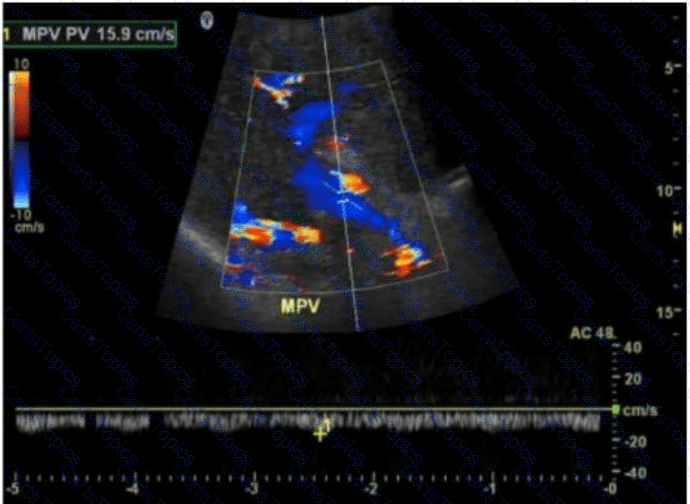
Which sections of the liver are divided by the structure indicated by the arrow on this image?
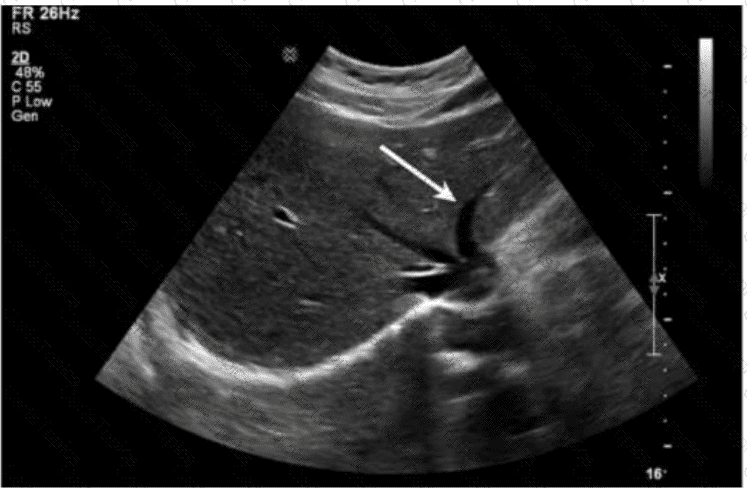
What is the normal Doppler waveform signature of the hepatic veins?
Which technique is used to demonstrate the finding in this video?
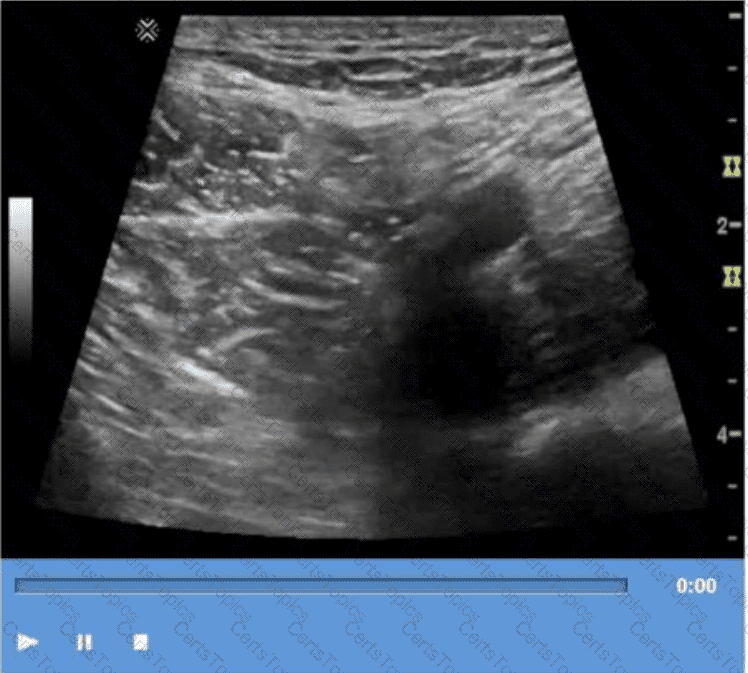
Which condition is most likely in a patient presenting with weight loss and fatigue along with elevated liver enzymes, elevated potassium, and decreased sodium?
Which probe frequency is most appropriate for imaging of the salivary glands?
Which condition is a cause of intrahepatic dilatation with a normal common bile duct?
Which condition is associated with multiple pancreatic cysts?
Which technique is best for demonstrating the characteristic of the small hepatic lesion identified by the arrow on this image?

Which common congenital anomaly is typically seen as a cystic midline anterior neck structure?
Which sonographic finding distinguishes focal nodular hyperplasia from hepatic adenoma?
Which sonographic finding is most consistent with scrotal inflammation?
Which scanning technique is most beneficial when imaging the appendix?
Which of the following would optimize visualization of a bladder mass?
Which condition of the transplant kidney is indicated by the arrows on these images?
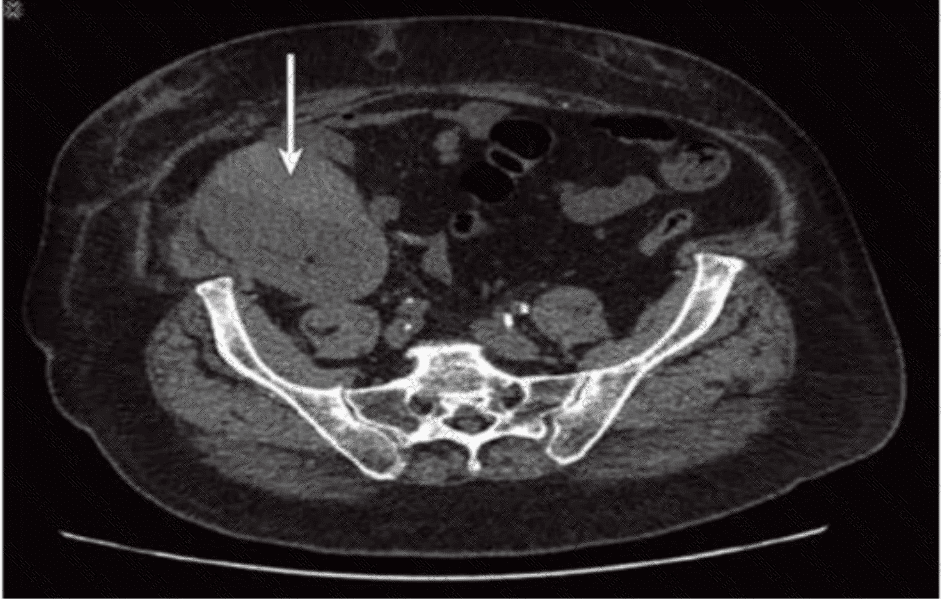
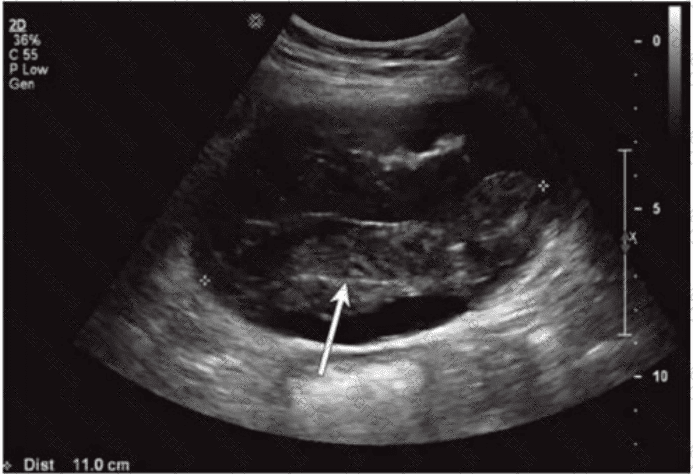
Which of the following is a possible early complication of a renal transplant?
Which vascular condition is most consistent with patent cutaneous para-umbilical channels and portal hypertension?
Which of the following is the most common symptom of cholelithiasis?
Elevation of alpha-fetoprotein levels is a characteristic finding in which tumor?
Where is the most common location for a branchial cyst in relation to the thyroid?
Which gray scale artifact is caused by the oscillation of gas bubbles?
Which technique may provide better visualization of the common bile duct in a patient with hepatic steatosis?
Which abnormality is the most common adult adrenal tumor?
What is the most common cause of nutcracker syndrome?
Which clinical finding is most likely associated with the splenic pathology demonstrated in this image?
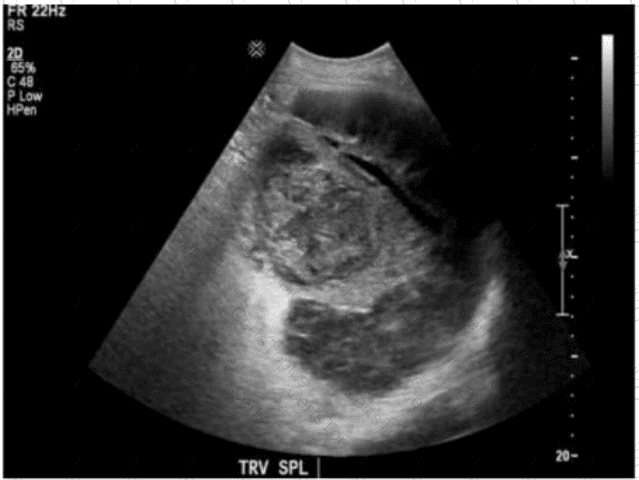
Which parameter is most likely increased distal to a renal artery stenosis?
Which sonographic finding is most consistent with this image of the abdominal aorta?
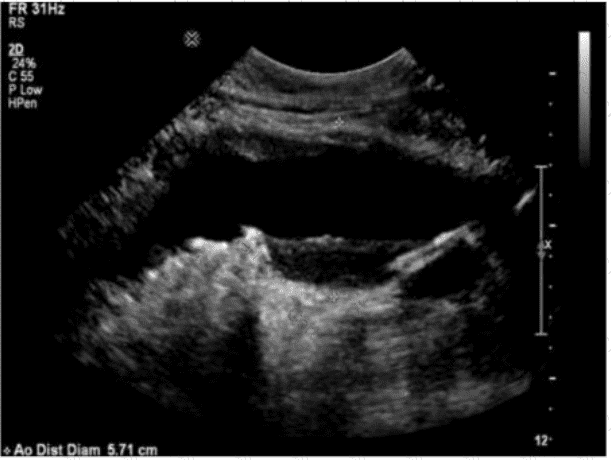
Which sonographic appearance of the bile ducts is demonstrated in this image?
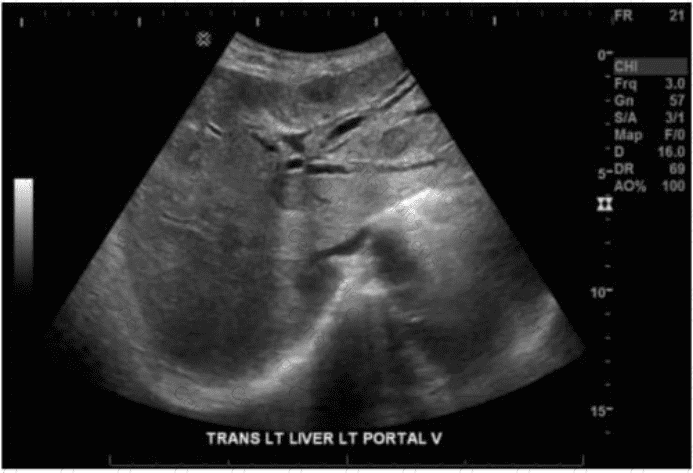
Which renal anomaly is demonstrated on this image?
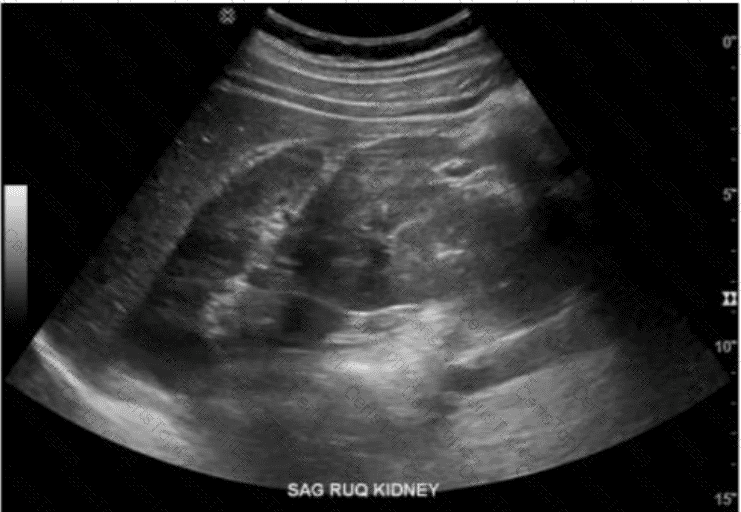
Which sonographic appearance of the normal epididymis is the most common?
A patient presents with ampulla of Vater obstruction, distention of the gallbladder, and painless jaundice. Which condition is most likely associated with these findings?
Where in the neck are most thyroid cancer recurrences found?
Which imaging technique best demonstrates ureteral patency?
Which action should a sonographer take if the abdominal aorta measures 5.5 centimeters in the anteroposterior diameter?
Which pancreatic condition is commonly associated with complete or partial atresia of the duodenum?
Which retroperitoneal finding is most likely associated with trauma?
Which sonographic feature is typical of a thyroid adenoma?
Which foreign body is better visualized with sonography than computed tomography (CT)?
Which condition puts the patient at greatest risk for a hematoma as a result of biopsy?
Which structure is indicated by the arrow on this image?
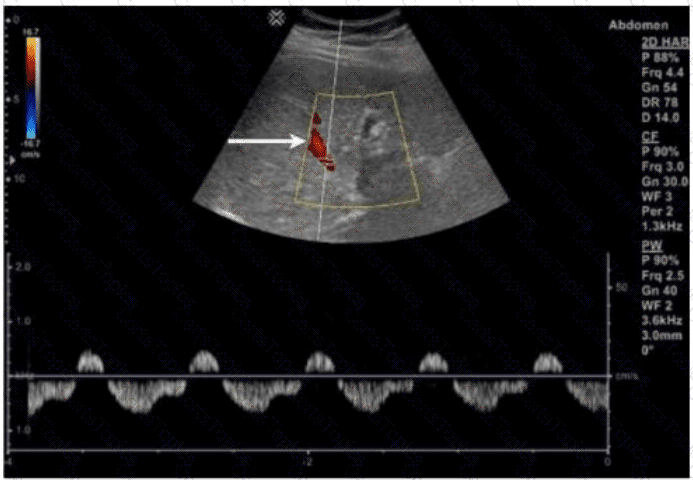
Which condition is demonstrated in this image?
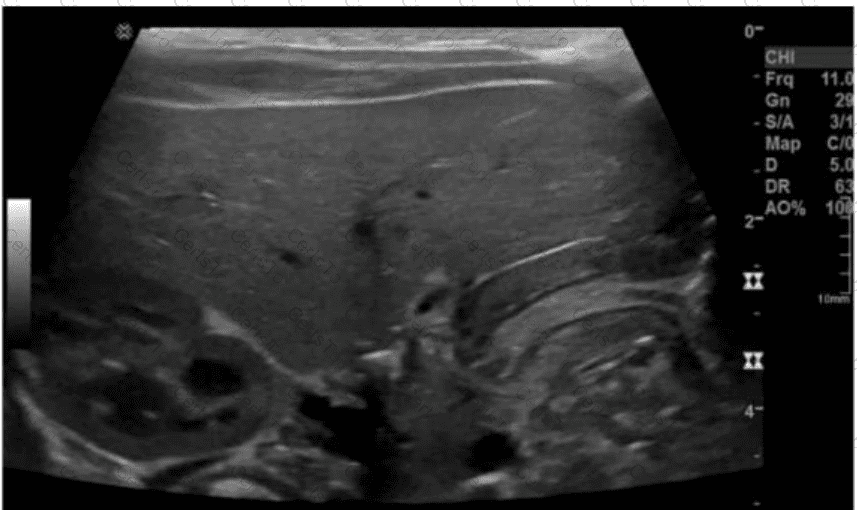
Which cause of transudative pleural effusion is most common?
Which condition is most likely associated with this image of the common bile duct?
